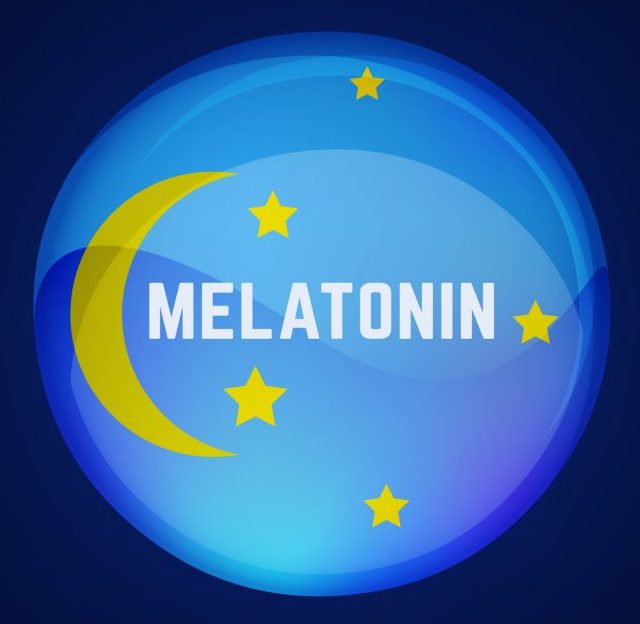
Beyond Sleep: 5 Ways Melatonin puts the Breaks on Aging
You have probably read about the use of melatonin as a natural sleep aid, but did you know that melatonin may also play an important role in slowing down the aging process?
Melatonin is a hormone that regulates our circadian rhythm, or our sleep-wake cycle. It is secreted by a small gland in the brain, called the pineal gland. The pineal gland has only one function and that is to produce copious amounts of melatonin at night. In the morning, as the sun rises and our eyes are bathed in light, the pineal gland turns off and stops producing melatonin. The natural production of melatonin in response to darkness plays a crucial role in making us feel drowsy and promoting restorative sleep. Additionally, melatonin appears to have several other beneficial roles as well, and may even guard against age-related diseases and decline.
Melatonin has powerful anti-inflammatory and antioxidant effects. It is well known that the process of aging and many of our chronic degenerative diseases are the results of systemic inflammation and free radical damage to our cells and tissues.
Benefits of Melatonin Beyond Sleep:
- Free radical scavenger. Melatonin’s antioxidant effects protect against free radicals that damage tissue and play a role in heart disease, cancer, diabetes, and other degenerative diseases. Melatonin also effectively fights inflammation, another root cause of many diseases.
- Immune function. Melatonin can activate T-cells and cytokines, which help to fight off foreign invaders or pathogens.
- Anti-cancer properties. There is some evidence that melatonin, through its antioxidant, anti-inflammatory, and systemic hormonal effects, can prevent cancer from occurring or induce cancer cell death if it does occur. Several studies have found a credible link between night light exposure, reducing melatonin levels, and breast cancer.
- Protects the blood-brain barrier. The blood-brain barrier is a special barrier that protects the brain from toxins and pathogens circulating in the blood. Melatonin may have the potential in preventing damage to the blood-brain barrier and thereby decrease the risk of developing neurodegenerative diseases like Alzheimer’s as we age.
- Bone density. Melatonin positively affects bone density by both suppressing bone loss and promoting new bone formation.
However, many studies have shown that melatonin levels decrease with age. Not only does this leave unable to repair our tissues from daily stress but it may also play a role in the aging process and developing age-related diseases.
But before you run to the store to pick up a melatonin supplement, first try some natural ways to boost your melatonin levels at night.
8 Natural ways to support healthy melatonin levels:
- Get morning sunshine. Morning sunlight directly into the eyes deactivates the pineal gland, suppresses the production of melatonin, and helps to “set” the natural rhythm of melatonin.
- Avoid light at night. Light is a direct inhibitor to the production of melatonin. Therefore, exposure to light at night, especially the blue light emitted from electronic devices, can prevent the secretion of melatonin making it more difficult for you to fall and stay asleep. So be sure to limit the use of smartphones, pads, and computers at night.
- Escape the EMFs or electromagnetic fields. EMFs are not a new phenomenon, but we are getting a steady increase in exposure with all the advancing technologies. Studies have shown that exposure to EMFs can influence our circadian rhythm by interfering with melatonin secretion. It is best to turn off your phone at night while you are sleeping. However, if it is your primary lifeline to your family, place it at least 15 feet away from your bed.
- Sleep in a dark environment. A dark environment ensures a good production of melatonin throughout the night. So be sure to turn off all lights, the TV, and any device that may be emitting light.
- Eat foods rich in melatonin, tryptophan, and magnesium. Foods rich in melatonin include pistachios, almonds, walnuts, tart cherries, Golgi berries, and tomatoes. Because the amino acid tryptophan is needed in the production of melatonin, eating foods rich in tryptophan such as turkey and chicken can raise melatonin levels. Magnesium-rich foods like leafy greens, nuts and seeds and legumes also naturally boost your melatonin levels. If you do snack in the evenings, snack on foods such as pistachios, pumpkin seeds, almonds, or walnuts.
- Limit foods that decrease the secretion of melatonin. Meat and dairy have been shown to decrease the production of melatonin along with caffeine and alcohol.
- Take a hot Epsom salt bath. The warm water will have a relaxing effect on the body and the magnesium in the Epsom salt will aid to naturally boost melatonin levels.
- Maintain a consistent sleep-wake schedule. Going to bed at the same time every night and waking up at the same time every morning will help to maintain a healthy melatonin rhythm.
Certainly, supplementing with melatonin is also an option, but because melatonin can have side effects and may interact with certain nutrients, herbs, and pharmaceuticals medications, it is best to consult a health care practitioner before taking melatonin.
Want to further explore the use of melatonin as a sleep aid or to as an adjunct to healthy aging? Schedule a 30-minute supplement review and together we can determine if supplementing with melatonin is right for you.
Or email me at susan@urturedbones.com



